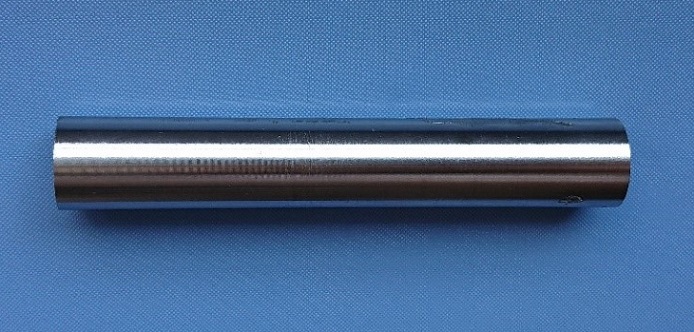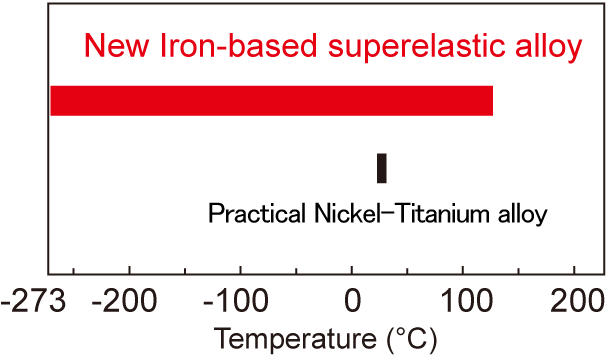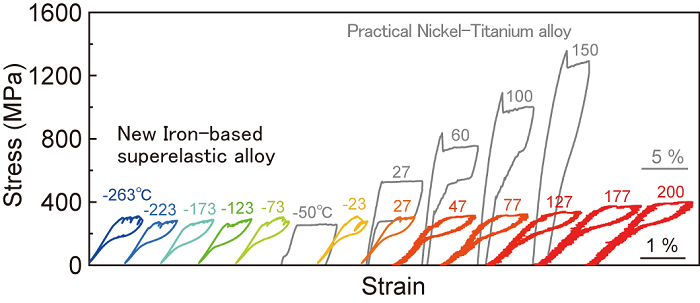
Researchers from Tohoku University's Graduate School of Engineering have discovered a novel iron-based superelastic alloy (SEA) capable of withstanding extreme temperatures -both high and low.
SEAs are found in a wide variety of commercial applications because of their superelasticity, allowing them to regain their original shape. Superelasticity occurs when the metal undergoes deformation at the point known as critical stress.
Generally, SEAs have a positive temperature dependence; the critical stress increases as the temperature rises. Conventional metal-based SEAs such as Ti-Ni, cannot be used at temperatures lower than -20C or higher than 80C and are costly to make. This limits their application to the form of thin wires or tubes.

The temperature range of the new iron-based SEA compared to conventional metal-based SEAs for a stress change of 50 MPa©Tohoku University
Associate Professor at Tohoku University, Toshihiro Omori and his team developed an iron-based SEA system, known as Fe-Mn-Al-Cr-Ni. This cost-effective SEA can also operate at a much wider temperature range.
A significant advantage of the new SEA is its controllable temperature dependence. Increasing the amount of Chromium allowed the researchers to change the temperature dependence from a positive to a negative. Balancing the Chromium content resulted in zero temperature dependence with the critical stress remaining almost constant at various temperatures.

A comparison of the stress-strain curves of the new iron-based SEA in comparison to Nickel-Titanium alloy.©Tohoku University
The discovery possesses wide-spread application for outer-space exploration given the large temperature fluctuations that occur," says Professor Omori."
Omori points to the fact that NASA is developing a superelastic tire that can withstand excessive deformation for Moon and Mars missions. The temperature differences between night and day on the Moon and Mars are -170C to 120C and -150C to 20C respectively.
"Yet, the new, SEA's usage does not stop there." Professor Omori adds, "It can potentially be used in tension braces in buildings or column elements in bridges - providing greater resistance to earthquakes."